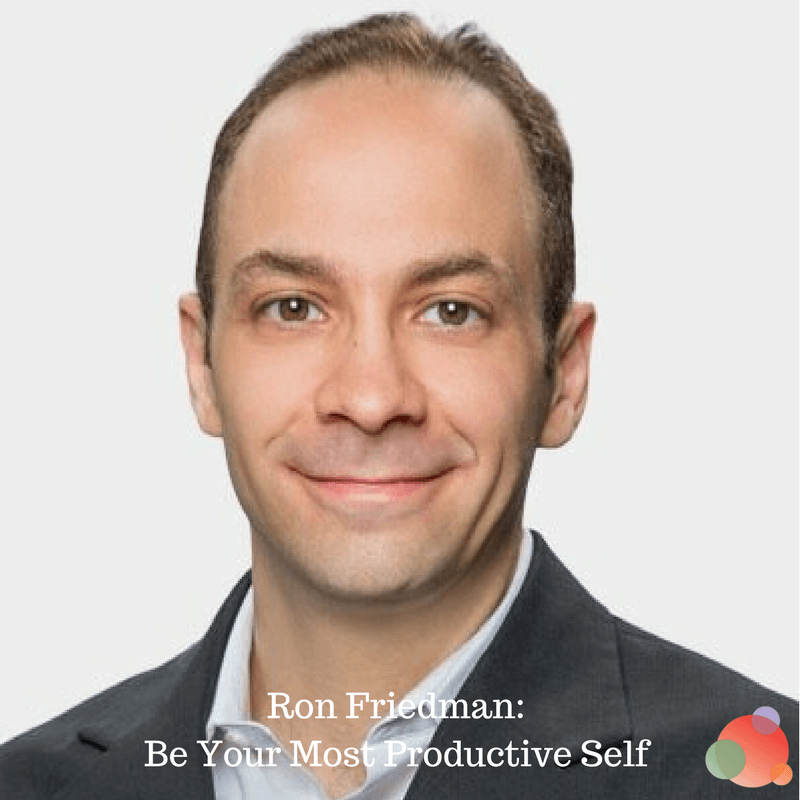 You may remember, from about a month ago, the story of my friend Ron Friedman.
You may remember, from about a month ago, the story of my friend Ron Friedman.
(If you missed the story, you can click the link above and read it quickly. Go ahead. I’ll wait.)
Ron is one of the smartest people I know…and one of the nicest, too.
Which is a little disconcerting because his resume is intimidating.
He’s a Ph.D. and a psychologist who specializes in peak performance—and not just peak performance at work, but at home, in the gym, or anywhere else you need to use your brain.
He’s also a regular contributor to the Harvard Business Review and many other leading publications, including Psychology Today, Fast Company, CNN, and Forbes.
And he is a master at using his relationships to build his business, as is evidenced in my initial story about him.
I mean, how many of us can claim that we not only write for the Harvard Business Review, but can get them to agree to leave a promotional link in our article?
You can’t count me in that group. I’d be too afraid to try.
But not Ron.
He was able to promote his Peak Productivity Summit last year in one of his articles…and had masses of people sign up directly from the Harvard Business Review.
(Picture me bowing and repeating, “I’m not worthy!”)
So when Ron says I need to do something, I listen and obey.
He is my Yoda.
One-Size-Fits-All Productivity Doesn’t Exist
He’s not just my Yoda, though.
His philosophy on productivity is actually useful.
Sure, we’ve all read the books and blog posts and watched TED talks and listened to podcasts that show how us to be more productive.
They all say the same things: Learn how to say no, protect your time, schedule time on your calendar for yourself, don’t attend needless meetings.
Some of those things work for some of us—and others? Not so much.
I mean, how many of us can actually say no to meetings, particularly if they’re scheduled by our boss or client?
Not many of us at all.
So, while the one-size-fits-all approach to productivity helps in some ways, it doesn’t so much in others.
We need to be able to create a productivity plan that is individualized.
When Are Your Most Productive Hours?
This is because, not only do some of us not control our own schedules, we all have a specific two-hour window every day when we’re twice as productive as normal.
And it’s different for every, single human being.
I’m willing to bet no one would be surprised to learn my two-hour window is early morning.
The things I accomplish before 8 a.m. is incredible…I’m not that kind of productive in the remainder of my day. Ever.
Do you know when your two-hour window is?
You can figure it out with a quick quiz Ron put together to help you customize your productivity plan.
Did you guess correctly or were you surprised?
Now think about how you can revolve your day around your most productive two hours of each day.
What immediate changes can you make?
How to Boost Your Work IQ
Armed with your quiz results and your list of immediate changes, your next step is to download How to Boost Your Work IQ.
It will give you some powerful strategies to start every day on the right foot and create your productivity plan.
It will help you customize your productivity plan and be ready to hit the second half of the year with a running start.
You’ll also learn:
- The three keys to working smarter
- How to “chunk” activities (this is my most favorite thing to do—I do this every day and get a TON done)
- The best time to take a break (I’m a fan of exercise, a walk around the block, or some meditation every day)
- How to have a creative breakthrough when you’re stuck
- How to spend the last 10 minutes of the day
Your Customized Productivity Plan
Productivity, doing more with less, life hacks, work-life balance, working smarter, not harder…these are all things we struggle with daily.
As you start to figure out what works for you, my Yoda, Ron Friedman, will become yours, too.
I’d love to know what the quiz told you, what you learned from reading the book, and what your productivity plan looks like.
Let’s hear it!